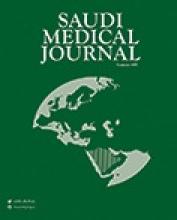REVIEW ARTICLE
The potential role of microbes in oncogenesis with particular emphasis on oral cancer
For over a century, non-virus microorganisms, especially bacteria are have been implicated as causal agents of cancers. A wide range of bacteria and other non-virus microbes including fungi, have been implicated over the years are involved in oncogenesis by their ability to induce inflammation, which may cause cancer. It seems that there is no single “cancer germ,” as most bacteria can apparently induce cancer. By ignoring bacteria as a causal agent of cancer, we set back our understanding of this crucially important disease, and as a result, have hindered the development of potential cures.
see page 607
ORIGINAL ARTICLES
Effects of hemodialysis on macular and retinal nerve fiber layer thickness in non-diabetic patients with end stage renal failure
Atilgan et al evaluate whether the acute effect of hemodialaysis (HD) on retinal nerve fiber layer (RNFL) and macular thickness show consistency and repeatability during a given time period. In this study, an increase in superior quadrant RNFL thickness was found to be the only consistent acute effect of hemodialaysis. On the other hand, chronic effect of HD was found to be a significantly thinner mean, temporal and inferior RNFL and thinner macular thickness in end stage renal failure patients without diabetes mellitus when compared with normal controls. The significance of these findings needs to be determined especially considering development of uremic optic neuropathy, loss of RNFL especially when there is coexisting glaucoma, and importance of neuroprotection in these patients.
see page 641
Severe subtype of alopecia areata is highly associated with thyroid autoimmunity
Bin Saif assesses the significance of thyroid autoimmune screening in alopecia areata [AA] patients. In this study, it is found that thyroid autoantibodies were positive in 40% of severe AA, 14% of mild AA, and 4% of healthy subjects. The frequency of thyroid autoantibodies and serum thyroid stimulating hormone level were significantly higher in patients with severe AA than healthy controls. He concludes that severe subtype of AA is associated with a high risk of autoimmune thyroid disease. This highlights the significance of screening for thyroid abnormalities and thyroid autoantibodies in patients with severe AA.
see page 656
CASE REPORT
Eosinophilic variant granulomatosis with polyangitis involving dura, bilateral orbits and mastoids
Granulomatosis with polyangiitis (GPA) typically involves upper, lower respiratory tract, and kidneys with renal symptoms necrotizing granulomatous inflammation with palisading histiocytes, neutrophils, and lymphocytes. Al-Hakami et al’s case is a 57-year-old lady with left eye swelling, left ear pain and discharge, but with no pulmonary or renal symptoms. Investigations revealed positive cytoplasmic antineutrophil and proteinase 3 antibodies. Computed tomography and magnetic resonance imaging showed meningeal thickening and bilateral structural changes of orbits and mastoids. Lacrimal gland biopsy showed non-necrotizing granulation with eosinophilic infiltration. She was diagnosed with eosinophilic variant GPA of eyes and mastoid bones bilaterally extending to dura.
Lacrimal gland biopsy shows eosinophilic granuloma. The arrow head points to an aggregate of histiocytes. There are numerous plasma cells at the periphery (hematoxylin and eosin stain X600).
see page 690
- Copyright: © Saudi Medical Journal
This is an open-access article distributed under the terms of the Creative Commons Attribution-Noncommercial-Share Alike 3.0 Unported, which permits unrestricted use, distribution, and reproduction in any medium, provided the original work is properly cited.







